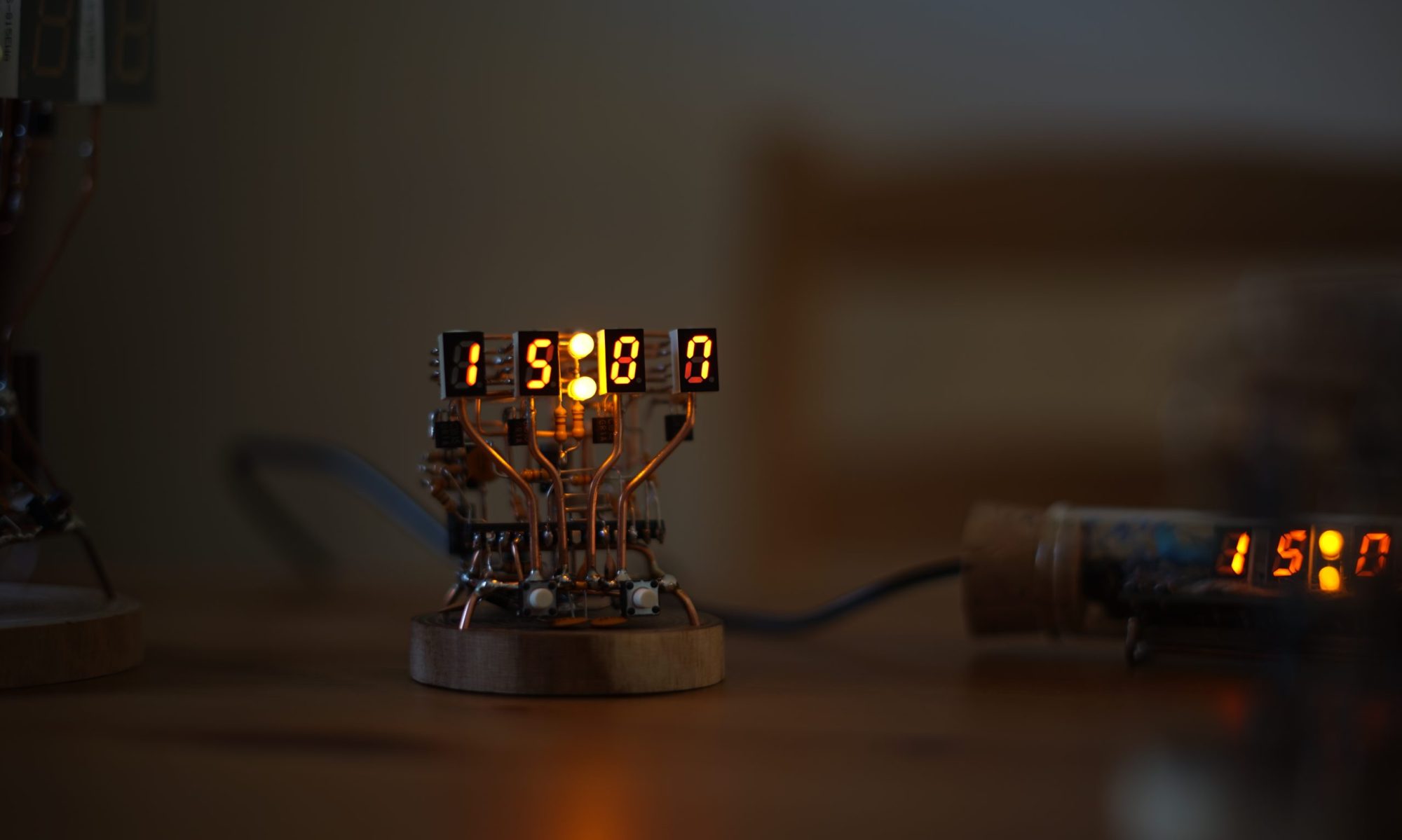Let’s get started to designing a circuit.
I will make the Iluminate tube that I showed in my last blog.
First , I drew a block diagram.
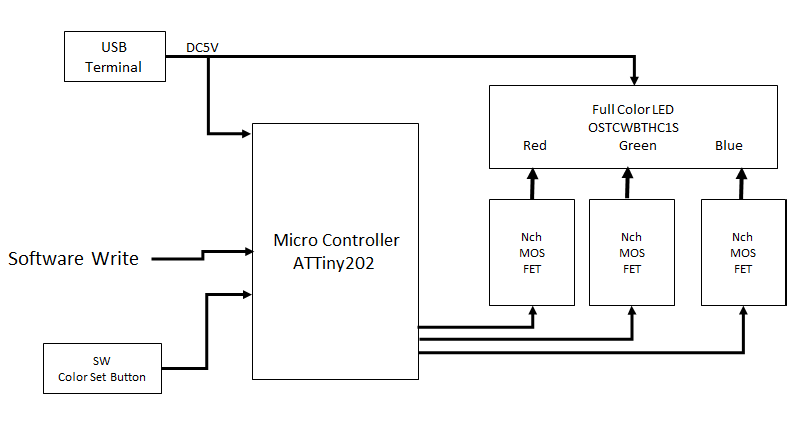
I would like to use Full-color LEDs to iluminate the test tubes colorfully.
Full color LED can be adjusted to any color by adjusting the brightness of the three primary colors of Red,Green and Blue.
Also, I adopted a high-power full-color LED (OSTCWBHC1S) with a maximum output of 1W from OPTOSUPPLY because I wanted to emit strong light.
If it is directly connected to the microcomputer, the current will be insufficient, so insert an Nch MOSFET in between LED and microcomputer.
This time, I used ATTtiny202, which is the smallest microcomputer, because the area of the circuit board must be made very small.
Below is a brief summary of the ATTiny 202 specifications. This microcomputer is exceptionally cheap at 40 yen per piece!
・Power supply:1.8~5.5V
・Core:tiny-AVR
・Core size:8bit
・Command Length:16bit
・clock:20MHz
・program memory:2kB
・EEPROM:64B
・RAM:128B
・GPIO:6pin
・AD-Convertor:6Ch
・UART/USART:1Ch
・I2C:1Ch
・SPI:1Ch
・Timer:2Ch(16bit×2)
・Package:SOP8

The memory capacity of this microcomputer is only 2kB.
Is it about 2000 half-width text characters? Since the capacity is very small, only simple programs can be written.
However, this should be enough if it only illuminates a three-color LED.
Next, the LED specifications are shown below.
For the LED, I adopted a full-color LED containing the three primary colors.
DC Forward Current:150mA
Power Dissipation: 1W
・VF:
Red…2.5V
Blue、Green 3.3V
・ΦV:
Red…22lumen
Green…35 lumen
Blue…12 lumen
・λD:
Red…624nm
Green…525nm
Blue …460nm
・2θ1/2:120°


Power Dissipation is 1W. The standard current is as high as 150mA. It’s very dazzling.
I wrote the electric circuit diagram below.

The Full color LED used has a very high current. it is difficult to operate it by connecting it directly to the output terminal of the microcomputer.
Therefore, Increase the current by connecting an N-channel MOSFET to each LED.
The brightness of the LED is adjusted by the PWM signal from the microcomputer.
Wrote the calculation of limiting resistance(R5,R8,R11) connected to LED below.
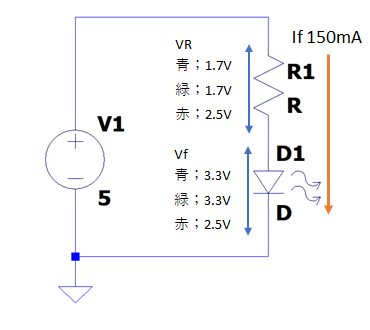
IF the MOSFET is turn ON completely that can be only resistor and LED on the circuit by omitted MOSFET.
The information required for the calculation is the standard current and voltage of the LEDs below.
IF=150mA VF:Red…2.5V Blue Green 3.3V
The value obtained by subtracting the LED Vf from the power supply voltage is the voltage between the terminals of the resistor.
Since a current of 150mA is passed through the resistor and LED, the calculation result of the resistance value of the limiting resistor is as follows.、
Blue; R=V/I = 1.7V / 150mA = 11.33[Ω]
Green; R=V/I = 1.7V / 150mA = 11.33[Ω]
Red; R=V/I = 2.5V / 150mA = 16.66[Ω]
However, the right resistance value is not sold on the market. The resistors sold on the market follow the E24 series, with the closest values is below.
blue; 11.33[Ω]=10Ω
Green; 11.33[Ω] =10Ω
Red; 16.66[Ω] =15Ω
next, Calculate the actual current when this resistance value is applied.
Blue; Current If [mA] = V/R = 1.7 / 10 =170 [mA]
Green; Current If [mA] = V/R = 1.7 / 10 =170 [mA]
Red; Current If [mA] = V/R = 2.5 / 15 = 166[mA]
Make sure that the calculated current value is less than the rated current value listed in the LED data sheet.
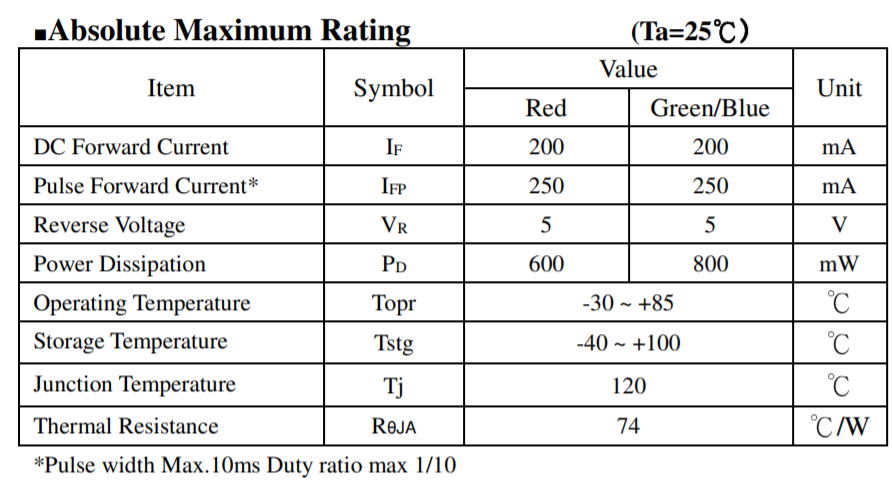
Since the DC rating of the LED is 200mA, there is a surplus of about 30mA.In addition, since this unit performs PWM control, the value of “Pluse Forward Current” in the data sheet is applied. Then, the rating becomes 250mA, and there is sufficient margin even if the error of resistance is taken into consideration.
The voltage between the resistor terminals should be low due from the power loss of the FET.
Next, Calculate to the Power Loss of the Resistors below.
Blue; Power Loss of the Resistor(Blue) Pr [W] = V * If = 1.7 V*170mA = 289 [mW]
Green; Power Loss of the Resistor(Green) Pr [W] = V * If = 1.7 V*170mA = 289 [mW]
Red; Power Loss of the Resistor(Red) Pr [W] = V * If = 2.5 V*166mA = 415 [mW]
Only the red color is prominent and the loss is large.
For the above reasons, use a resistor with a rating of 0.5W or more.
Next is the selection of FET.
Since a maximum current of 170mA is flowing between the drain and source of the FET, it is necessary to allow more drain current to flow. I chose BSS138 because of its price and performance.

・Construction:MOSFET
・Number of circuits:1
・channel:N
・Voltage between drain and souce:50V
・ Voltage between gate and souce :±20V
・Current of Drain(DC):300mA
・ON resistance between drain souce:1.6Ω
・Tolerance of Power Loss(25℃):350mW
・Package:SOT-23
Next Calculate the Power loss of FET.
We simulated FET loss with LTSpice. I wish I could use the BSS138 Spice model, but I couldn’t add it successfully. Therefore, we simulated with a FET model with similar values of Rds and Vds.
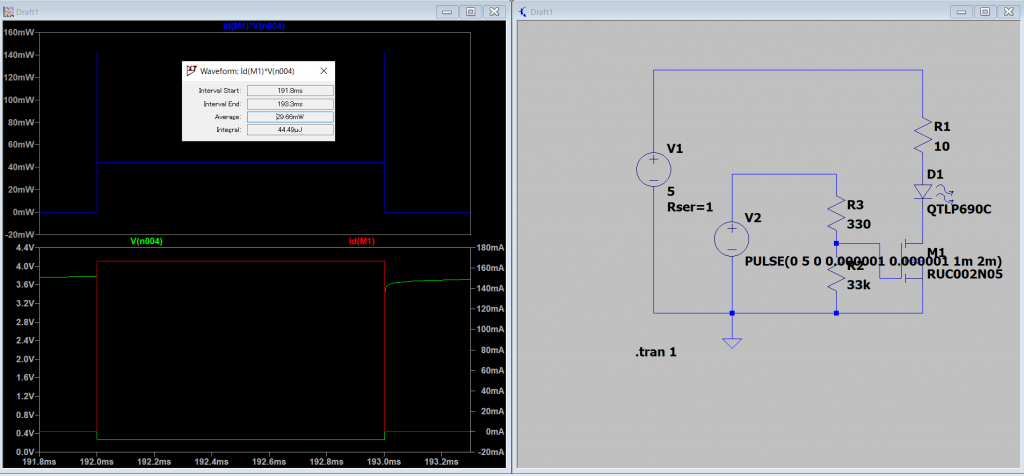
The Joule integral value of the power obtained by multiplying Ids and Vds from this value was 44.49uJ.
Since the PWM pulse is 500Hz, 500 * 44.49u = 22.24 mW
The thermal resistance θjc of this FET is 350 ° C / W.
When the temperature is 25 ° C, the junction temperature is Tj = 25+ (350 × 0.02224) = 32.78 ° C.
Even with the maximum current, the temperature rises by + 7.78 ° C, so I don’t think it will have much effect.
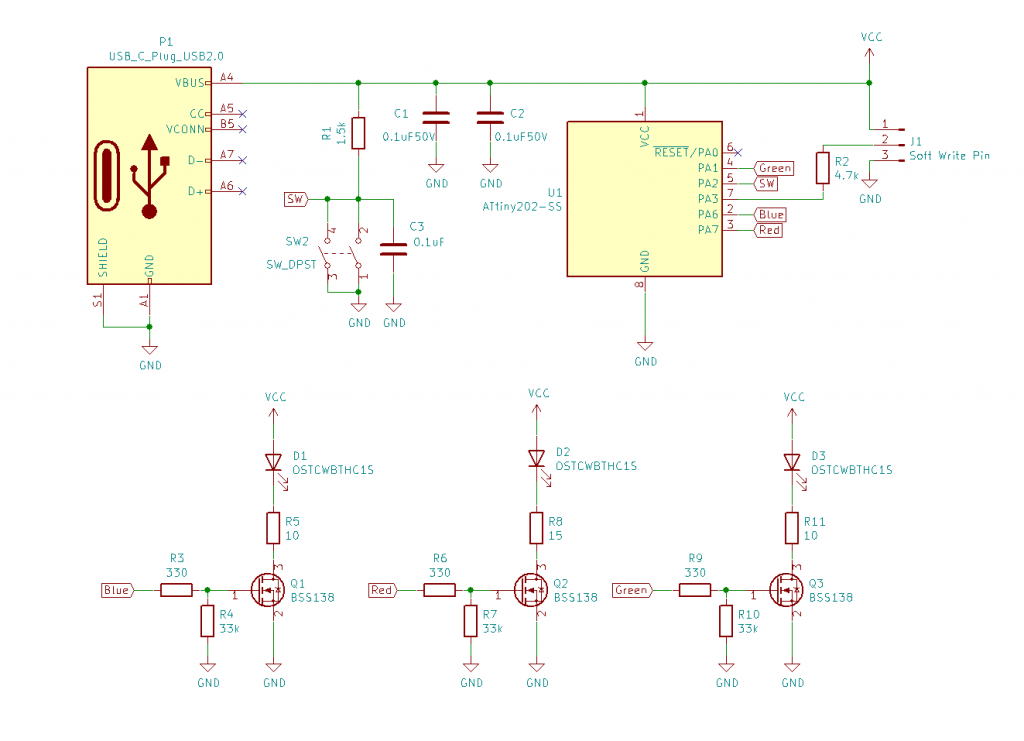
For the above reasons, it is decided by this circuit diagram. Next, design the board based on this. see you next time.
